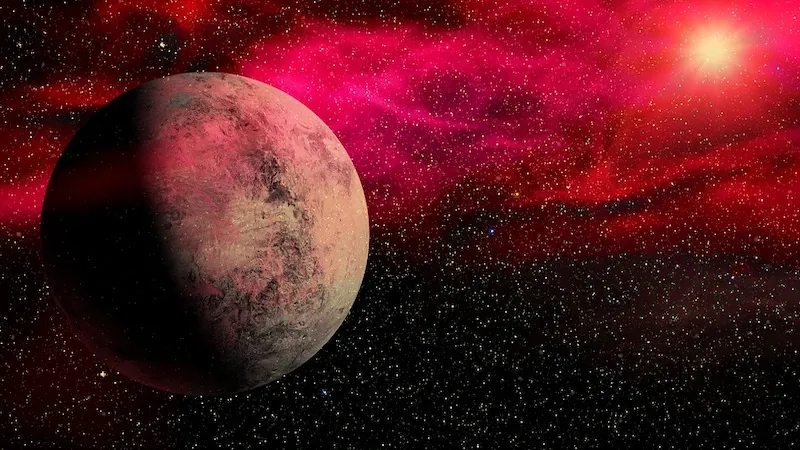
Surprising Reactions: How Hydrogen and Water Shape New Planetary Atmospheres
2025-03-29
Author: Ming
Introduction
Recent revelations from innovation in planetary science, led by researchers at UCLA and Princeton, suggest that the atmospheres of newly formed planets may contain unexpected mixtures of hydrogen and water. Traditionally, models of planetary formation treated these components as separate entities, assuming they wouldn’t chemically react. However, the intense conditions found on young planets—similar to those between Earth and Neptune—challenge this notion, revealing fascinating chemical interactions that could have profound implications for planetary evolution.
Key Findings
The study highlights that planets in our galaxy between the sizes of Earth and Neptune typically develop hydrogen-rich atmospheres. This creates an environment where hydrogen can engage in complex reactions with water, leading possibly to rainfall deep within these atmospheres. This interaction could define not just the composition of the atmospheres but also the internal dynamics and evolutionary trajectory of these planets over millions to billions of years.
Research Methodology
Given the difficult-to-replicate conditions of extreme heat and pressure, the researchers employed advanced quantum mechanical molecular dynamics simulations using supercomputers to analyze the behavior of hydrogen and water interactions under varying temperatures and pressures. This research has been published in The Astrophysical Journal Letters, revealing the unseen intricacies of planetary atmospheres.
Expert Insights
Study co-author Lars Stixrude noted the limitations of existing knowledge in planetary science, stating, 'We usually think of basic physics and chemistry as being known already. But the deep interiors of planets challenge what we can predict based on our current understanding.'
Simulation Results
The simulations involved introducing hundreds of molecules of hydrogen and water and observing their interactions. The results indicated that during their formation, planets could develop atmospheres made of a homogeneous mix of these elements. However, as these planets cool over time, hydrogen and water start to segregate, leading to a unique 'rainfall' phenomenon that could drastically alter their atmospheric properties and generate additional heat from within.
Implications for Astrophysics
First author on the study, Akash Gupta, emphasized the transformative aspect of this process: 'Clouds would form as the planet cools, leading to a crucial separation of hydrogen and water in the atmosphere. This separation sets the stage for complex atmospheric dynamics, with denser water sinking and lighter hydrogen rising, resulting in distinct hydrogen-rich and water-rich layers.'
Broader Impact
The findings may also help demystify existing astrophysical puzzles, such as the contrasting thermal emissions between Uranus and Neptune, despite their similarities in size. The researchers propose that Neptune's greater internal heat could be attributed to a higher degree of water 'rainout' compared to Uranus, suggesting differing evolutionary paths for these similar-sized planets.
Exoplanetary Implications
Moreover, these insights have tantalizing implications for exoplanets outside our solar system, particularly those like K2-18 b and TOI-270 d. These worlds, believed to have hydrogen atmospheres above water oceans, could challenge our understanding of habitability, particularly if the internal temperatures prevent the separation of hydrogen and water, leading to a single, mixed state.
Conclusion
The research culminates in a nuanced narrative that redefines how we classify and search for water-rich exoplanets across the galaxy. As co-author Hilke Schlichting stated, the mixing of hydrogen and water could significantly alter the expected structures and thermal evolution of Earth-like and Neptune-like exoplanets, steering astrophysical exploration towards distinguishing between homogeneous and layered worlds.
As scientists continue to untangle the complex interplay of materials within these distant atmospheres, the pursuit of knowledge promises not only to enhance our understanding of planetary formation but also to chart the course for the next generation of exoplanet exploration. Stay tuned as we bring you more groundbreaking discoveries!



 Brasil (PT)
Brasil (PT)
 Canada (EN)
Canada (EN)
 Chile (ES)
Chile (ES)
 Česko (CS)
Česko (CS)
 대한민국 (KO)
대한민국 (KO)
 España (ES)
España (ES)
 France (FR)
France (FR)
 Hong Kong (EN)
Hong Kong (EN)
 Italia (IT)
Italia (IT)
 日本 (JA)
日本 (JA)
 Magyarország (HU)
Magyarország (HU)
 Norge (NO)
Norge (NO)
 Polska (PL)
Polska (PL)
 Schweiz (DE)
Schweiz (DE)
 Singapore (EN)
Singapore (EN)
 Sverige (SV)
Sverige (SV)
 Suomi (FI)
Suomi (FI)
 Türkiye (TR)
Türkiye (TR)
 الإمارات العربية المتحدة (AR)
الإمارات العربية المتحدة (AR)